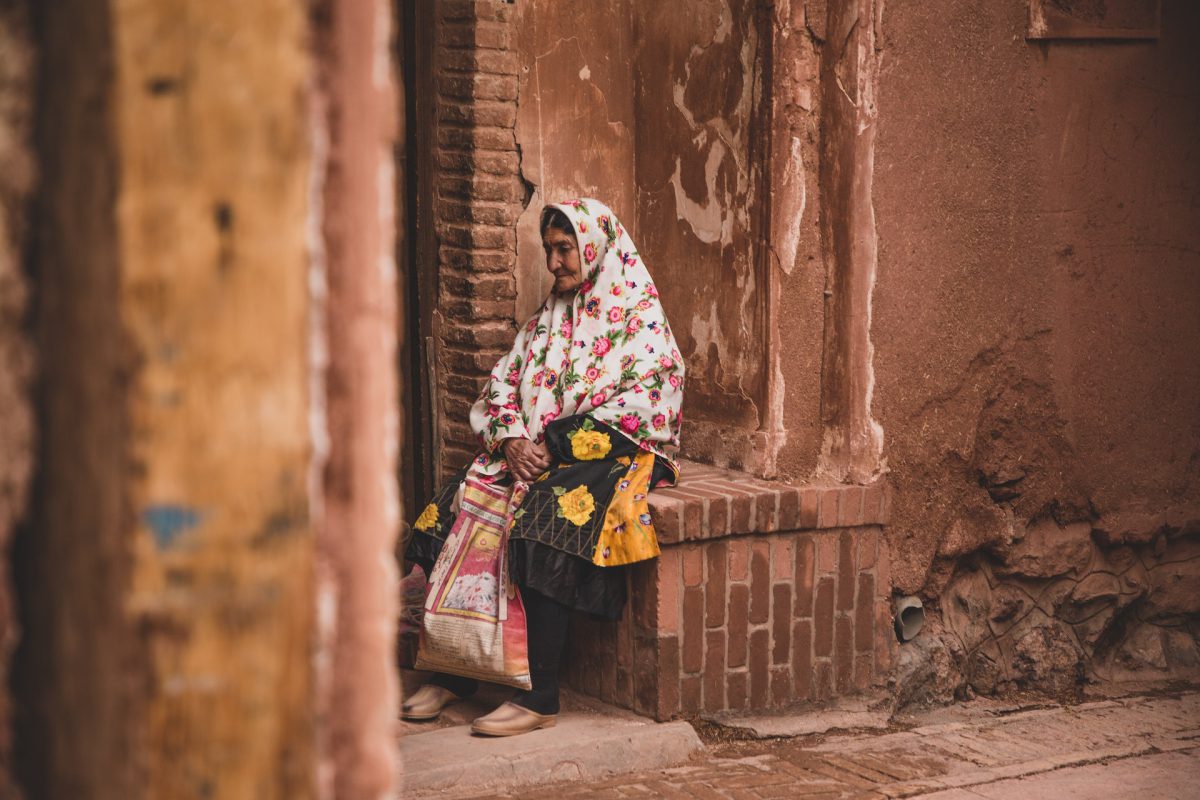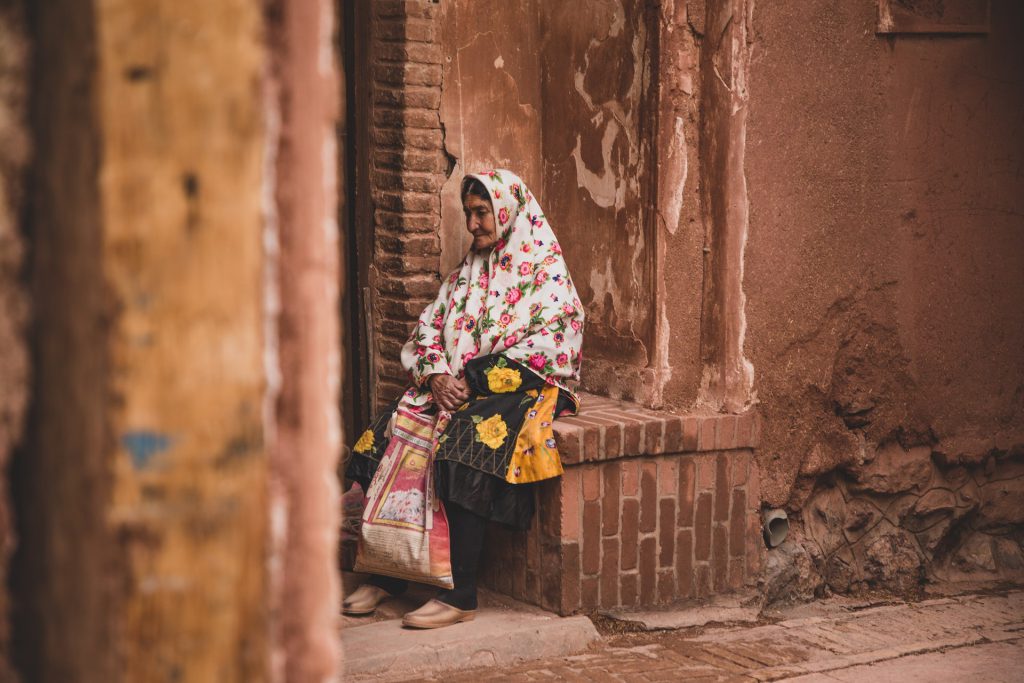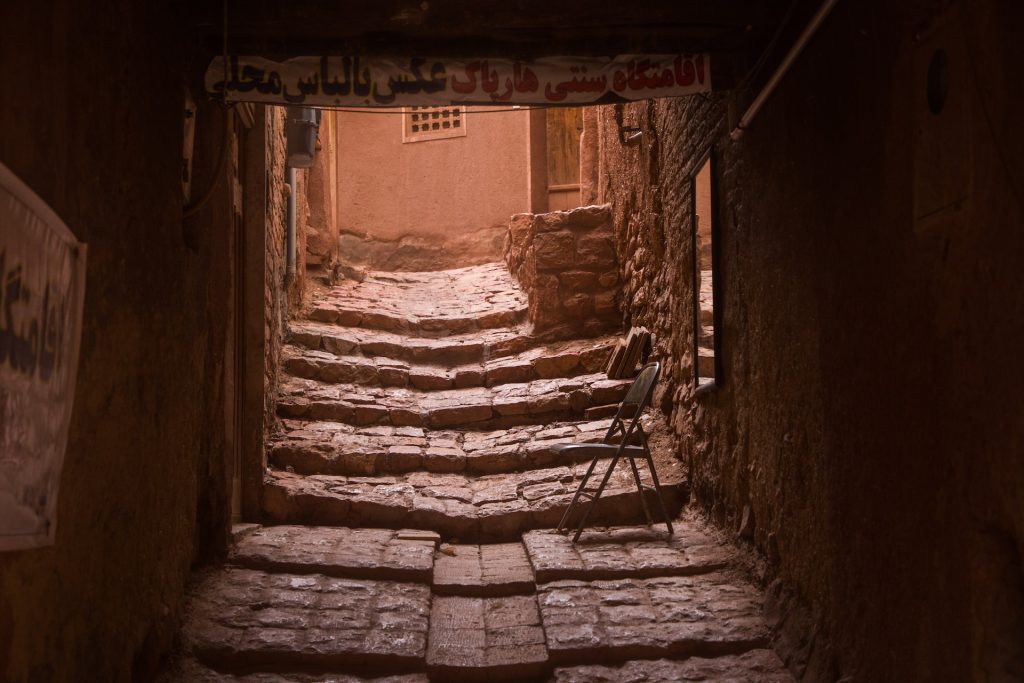Table of Contents
Abyaneh Village: Step into the Past
Abyaneh traditional village is a hidden gem nestled in the heart of Iran that is sure to captivate visitors with its unique blend of natural beauty and cultural heritage. This ancient village boasts of its reddish soil, thanks to the high concentration of iron oxide in the region, which lends it a distinctive charm. But what truly sets the village apart is its ability to preserve its culture, language, architecture, and traditional customs over the years.
The village’s mud-brick houses, constructed in a step-like structure, reflect a traditional Persian architectural style that has been intricately preserved and maintained by the local villagers. Walking through the narrow alleys, visitors will witness the locals donning traditional costumes on special occasions, speaking in ancient Persian dialect, and practicing age-old customs and rituals. A trip to this village feels like stepping back in time, allowing visitors to experience traditional Iranian culture in a way that is both unique and inspiring.
Apart from its cultural significance, the scenic beauty of the village is equally captivating. It is surrounded by majestic mountains, beautifying the scenery and making it a must-visit destination for hikers and nature lovers. Abyaneh, Kashan, located in close proximity to the popular tourist cities of Kashan and Isfahan, is an ideal destination that should not be missed by anyone who wishes to experience the beauty and culture of Iran truly.
Abyaneh Meaning: Looking for the Origin
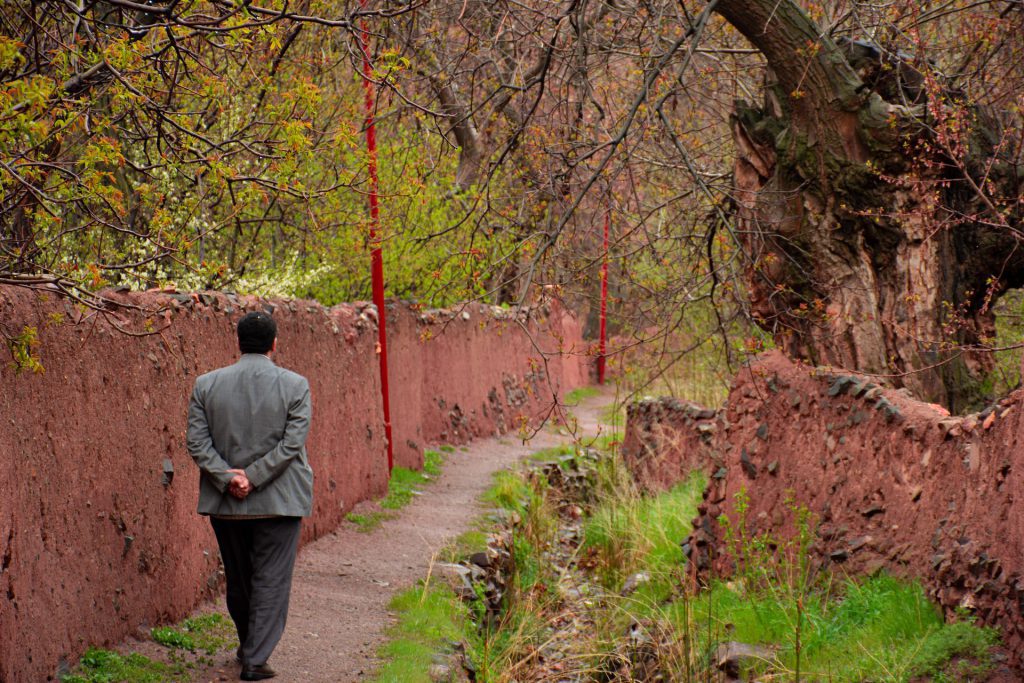
Situated in Iran’s desert, Abyaneh’s name, borrowed from “Viona,” means “Willowy.” It’s one of Iran’s oldest settlements.
In this village, history and grace meld seamlessly. The village’s ancient mud-brick houses and welcoming villagers preserve Iran’s rich traditions. Explore its winding streets and immerse yourself in a world where history and elegance meet, creating an enchanting experience.
Abyaneh History: Tracing the Footsteps of Ancient Persia
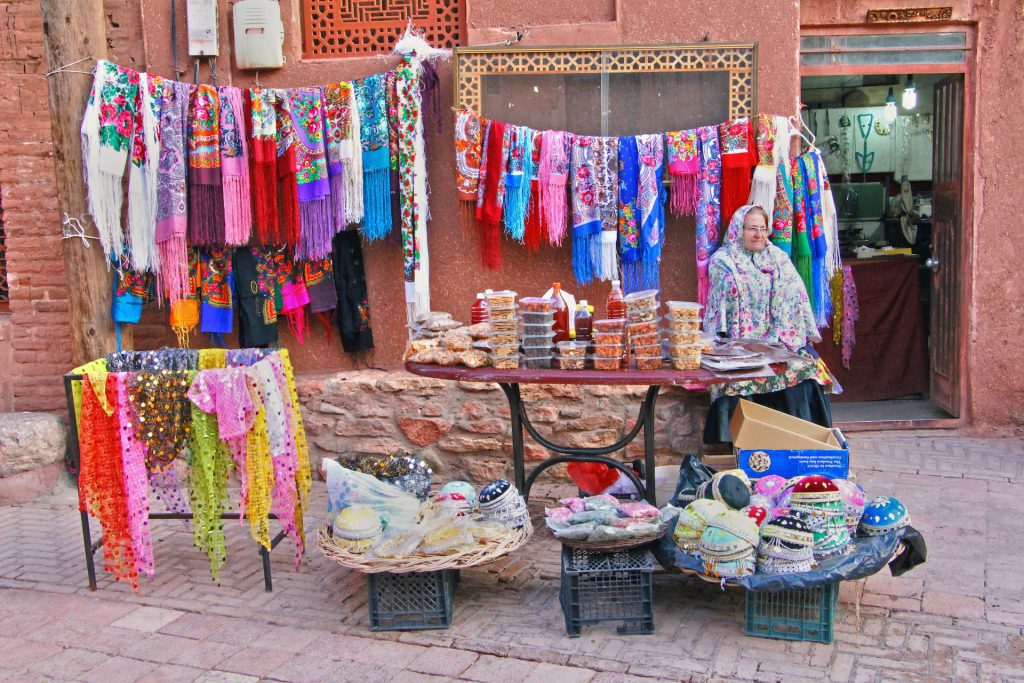
Abyaneh, Iran has a rich and fascinating past that dates back to the Sassanid dynasty, around 700 AD. The houses that adorn the slopes of this mountainous village are testimony to years of architectural beauty that date back to the Sassanid, Seljuks, Safavid, and Qajar eras. Even today, some of the most prominent ruins of the Sassanid fort that once stood here can still be seen on top of the village.
The remote location of the village and its isolation throughout history have contributed to preserving the village’s most traditional ceremonies, feasts, language, and aspects of local culture. The ancient architecture of the houses is also a testament to the passage of time, with stunning lattice windows and wooden balconies adorning the village’s adobe houses. But it is the houses’ unique reddish color that is perhaps the most enchanting, adding to the overall beauty and attraction of the village.
Abyaneh: Rich History and Culture
Abyaneh village, located in the Isfahan province of Iran, is not only known for its unique reddish soil and breathtaking mountain scenery but also for its ancient culture and customs. The village is situated at the foot of Mount Karkas, the highest mountain in the region, and is home to a seasonal river that flows through the surrounding valleys. Despite being a popular tourist destination, the village has a limited number of permanent residents, with many people only spending summers in the village.
One of the most fascinating aspects of the village is its people’s culture and language. Elderly villagers still speak Middle Persian, the language of Sassanian Persia that disappeared centuries ago, giving visitors a glimpse into a long-gone era.
The traditional clothing worn by the residents is equally captivating, with women wearing large white scarfs adorned with red flowers, colorful dresses, and a unique pair of pants, while men dress in black vests and wide trousers. This authentic attire is often captured by tourists in their photos, adding to the magical charm of this ancient village.
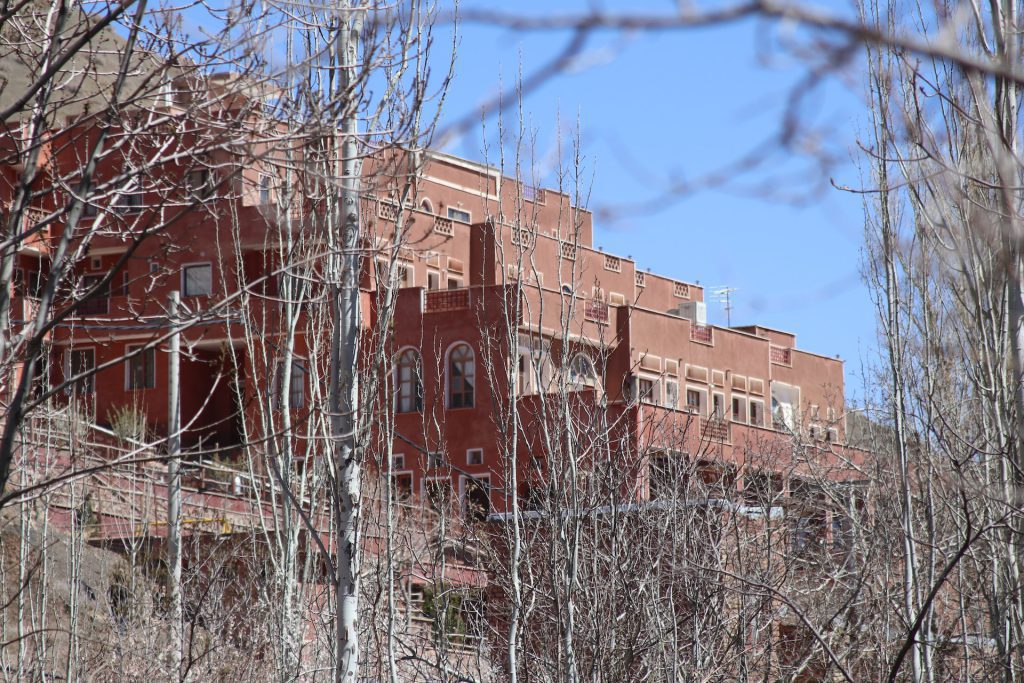
Abyaneh offers more than just a glimpse into Iranian history and culture. There is an undeniable energy that can be felt while wandering through the village’s meandering paths and exploring the surrounding landscapes. The charming local residents, with their warm welcome and eagerness to share their customs and traditions, only add to the village’s enchantment.
Visitors can also enjoy delicious traditional Iranian cuisines, such as the mouth-watering local dishes of Ghormeh Sabzi and Fesenjan while sitting in one of the many bistros that populate the village’s alleys. It is simply impossible not to fall in love with this place’s unique setting, distinctive architecture, and rich cultural heritage, making it a must-visit destination for any traveler interested in experiencing an authentic and immersive journey through Iran’s history and culture.
Abyaneh, UNESCO Heritage Site
Abyaneh Village in Iran is a UNESCO-approved treasure, one of only four such historical gems in the country. It’s the first among these distinguished villages, alongside Kandovan, Masooleh, and Meymand. Abyaneh paints a vivid picture of Persian culture, where traditions stand the test of time.
The village’s distinctive charm lies in its reddish clay buildings and the timeless attire of its residents. It is a living canvas, where the homes and the people wear the same rustic hue. As you wander through its narrow streets, you’ll be transported to a world where history lives and breathes, and where every color tells a story. This village is a true reflection of Iran’s enduring spirit, a place where culture and heritage come to life, leaving an indelible mark on all who visit.
Abyaneh Village Architecture
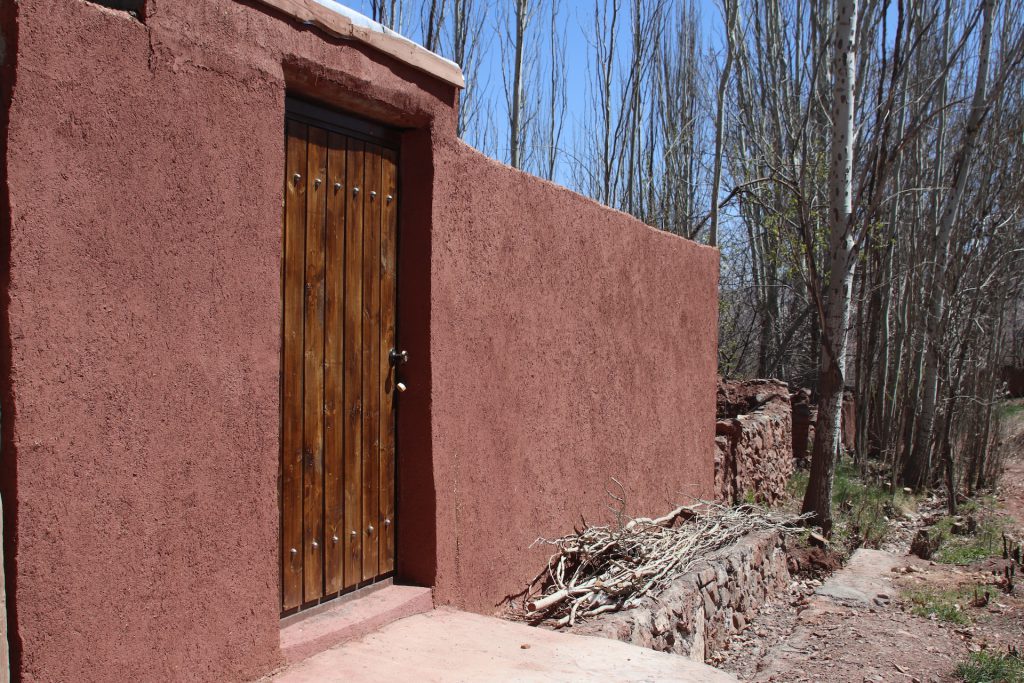
When exploring the charming village of Abyaneh, visitors are captivated not only by its stunning natural beauty but also by its unique architectural heritage. The village is well-known for its beautifully carved wooden doors, which adorn the majority of the houses there. But it’s not just the doors that are remarkable. The door-knockers of the village are equally intriguing and reflect the customs and traditions of the village.
If you take a closer look at these doors, you will notice that each one has a long-shaped and circular-shaped door-knocker, each producing a distinct sound. The long-shaped door-knocker was traditionally for male guests to announce themselves, while the circular one was for female guests. This custom reflects the cultural norms of the place, where gender separation is still observed in some households.
The door-knockers serve a practical function as well, as the specific sound they produce can help identify the gender of the visitor even before they are seen. If a male is knocking on the door, the male head of the household would respond to the knock, and the same goes for females. This unique practice is part of the charm of the village, giving visitors a glimpse into the customs and traditions of rural Iranian life.
Abyaneh Souvenir: Taking a Piece of the Red Village Home
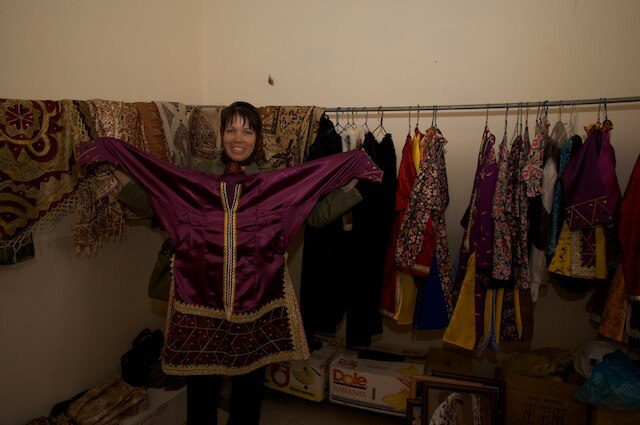
A visit to Abyaneh is not complete without taking home a special souvenir to remember the trip. The village is known for its unique selection of natural and handmade souvenirs, all sold in front of beautiful colorful houses with wooden windows. The experience of shopping here is unlike anywhere else, with locals sitting on their stairs, watching and selling their wares.
One of the most popular souvenirs is Lavashak, a delicious snack made from dried fruits like apples, plums, and apricots. The village is also known for its dairy products, walnuts, and almonds, which are all sold at local markets.
In addition to food items, the village is famous for its traditional handmade jewelry, including necklaces and bracelets, made with exquisite craftsmanship. Visitors can also find beautiful carpets, wall hangings, and quilts, all traditionally crafted by local artisans. These unique souvenirs not only showcase the creativity and style of the people but also make for excellent gifts to bring back home.
Things to Do in Abyaneh
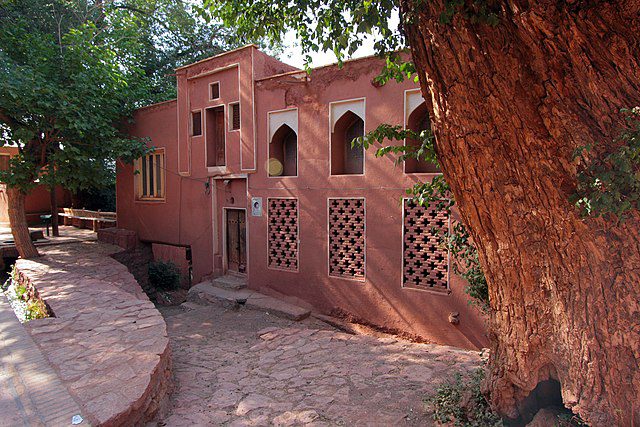
Abyaneh offers a delightful stroll through its charming lanes, but there’s more to discover than meets the eye.
Traditional Houses
The village’s quaint homes share a unique style with pretty balconies, delicate windows, and fancy wooden doors. Look closely at the doors, and you’ll spot something intriguing: round knockers for ladies and long ones for gents, a clever way of showing who should answer the doorbell.
Jame Mosque
Don’t miss the Jame mosque, the town’s oldest, dating back to the 11th century. While it might look plain from the outside, it hides beautiful details inside. Its arched door is a work of art, and the wooden mihrab, pointing toward Mecca, is original and ancient, from the year 1084. Don’t forget to glance up and admire the pretty painted patterns on the ceilings.
Harpak Fire Temple
Abyaneh’s oldest building, the Harpak Fire Temple, goes way back to the Achaemenid times. It may not look fancy on the outside, but it’s a rare stone-and-mortar structure. Inside, you’ll find three stories and a covered pathway with an ancient domed stone ceiling, giving you a sense of its age.
Hinza Temple
Further south, the Hinza temple, though weathered, tells a story of ancient beliefs, perhaps linked to the goddess of water. Locals believe it once sheltered the daughter of the 7th Shiite imam and still witness miracles here.
Ab Anbar Water Reservoir
The village has its own version of an ancient water reservoir, called Ab Anbar. Unlike the domed ones you’ll find in other parts of Iran, this one has a flat roof, once covered with wood and thatch. It’s a reminder of a time when water was incredibly precious.
In Abyaneh, each corner holds a piece of history and culture. Even in just three to four hours, you can savor the town’s rich tapestry of experiences.
How to Get to Abyaneh
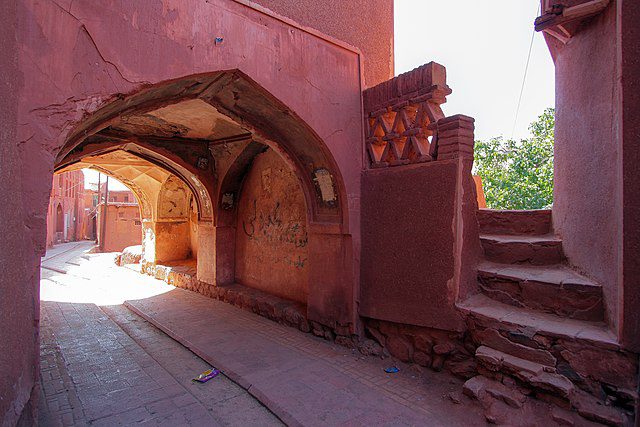
Getting to the lovely village of Abyaneh by car is easy. You have two main roads to choose from:
Kashan-Natanz Route
If you prefer a scenic, winding drive, take the Kashan-Natanz road. It’s a traditional route that lets you enjoy beautiful views along the way.
Kashan-Isfahan Freeway
For a quicker journey, use the Kashan-Isfahan freeway. It’s a modern highway that gets you to the village faster.
No matter which road you pick, your car trip to this village will be a memorable part of your adventure in this charming part of Iran.
Recommended Sightseeing Time of Abyaneh
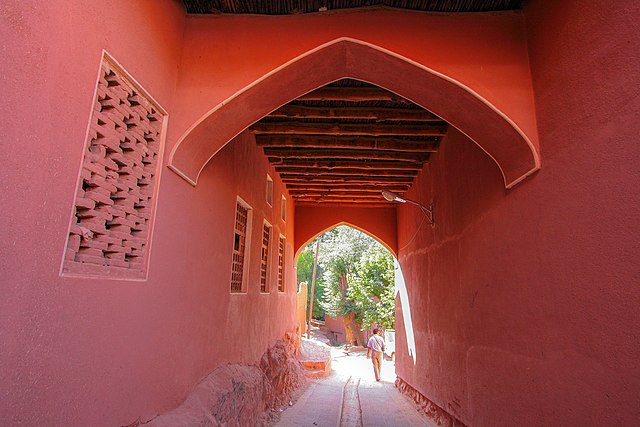
Abyaneh, a quaint Iranian town, is a place where a short visit of 3 to 4 hours can work wonders. In this compact time, you’ll unravel the town’s charm – a blend of old mud-brick buildings and narrow streets.
The village isn’t just for summer fun. It’s a stunning place all year round. It sits on the slopes of Karkas Mountains and has good weather for fruit trees, which locals rely on. You can enjoy the village’s outdoor beauty by walking its winding streets or sitting by the river.
Summer’s the busiest time, but spring and autumn are nice too. The weather’s pleasant, and it’s less crowded, giving you a more relaxed vibe. Winter gives the village a unique look with snow on the mountains and red clay houses, making it magical.
Even though it’s cold, winter is beautiful too, and it’s less crowded with tourists. You can enjoy the village’s peace and quiet. This village is a must-see spot in Iran because of its natural beauty and culture, no matter the season.
Where to Eat near Abyaneh
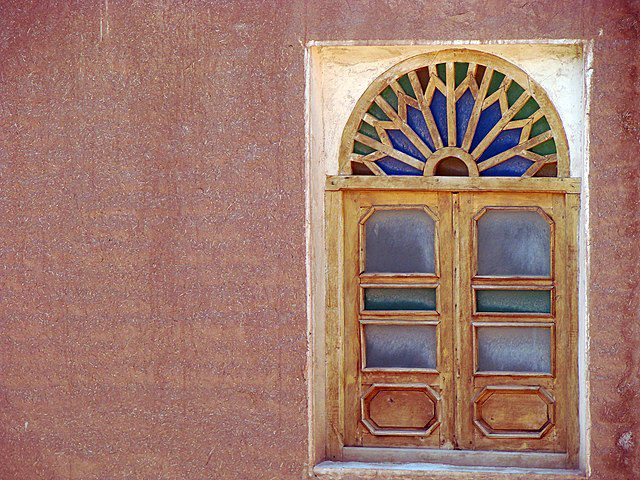
Abyaneh offers not only stunning vistas but also a rich tapestry of flavors waiting to be explored. Here, we’ll introduce you to three exceptional dining establishments that promise unique charm and delectable offerings.
Viunj Restaurant
The village’s culinary charm shines at Viunj Restaurant, where the essence of Persian cuisine is in every bite. With its cozy atmosphere and traditional decor, Viunj whisks you away on a flavorful journey through the region.
Domiloon Watermill and Restaurant
Nature meets cuisine at Domiloon Watermill and Restaurant. Imagine dining on a scenic terrace with a stream as your backdrop. They serve Persian classics with a modern twist, offering a unique dining experience in the village’s natural beauty.
Viuna Hotel Restaurant
For a touch of luxury, Viuna Hotel Restaurant combines fine dining with the village’s rustic charm. Their menu features carefully crafted Persian dishes in an elegant setting, making it a perfect spot for special occasions.
Where to Stay near Abyaneh
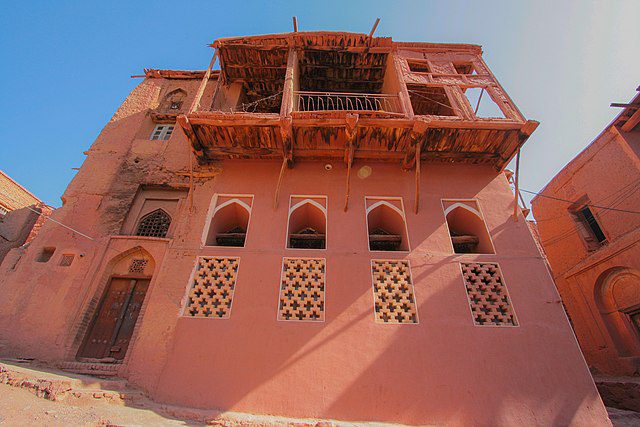
In the heart of the beautiful ancient village of Abyaneh, you’ll discover two cozy 3-star hotels for a pleasant stay. Viuna Hotel and Abyaneh Hotel not only provide comfy rooms but also let you soak up the charming atmosphere of this old village. After a day of adventure, these inviting places offer a peaceful and memorable night in Abyaneh.
Other Attractions near Abyaneh
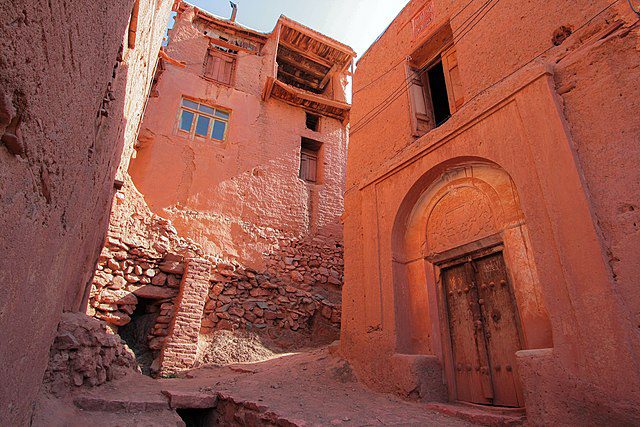
Beyond Abyaneh, there’s a world of wonders waiting. Explore historic sites and natural marvels, each with its own unique charm. Let’s explore together.
Zardkouh Fortress: A Climb Through History
Perched above the village, the Zardkouh Fortress, though mostly in ruins, beckons history enthusiasts and adventurers alike. Its relatively easy climb offers not only panoramic views of the village below but also a glimpse into the village’s safeguarding past. As you ascend, the whispers of bygone eras seem to echo through the ancient stones, making this journey a true step back in time.
Palahamooneh Fortress: A Panoramic Viewpoint
For the best views of the village, head to the Palahamooneh Fortress on the opposite side. It’s more than 200 years old, and while only its outer walls remain, the trip down, crossing the river, and up to the fort is worth it. Beyond the views, the area is interesting to explore, with hints of old cave homes and mountains surrounding the village.
Hanjan Castle: A Historical Stop
Not far from Abyaneh, on the road from Kashan, you’ll come across Hanjan Castle. It’s 500 years old and better preserved than the ones in the village, though it’s sadly falling apart. Most taxi drivers will let you snap a quick photo, but if you’re curious, you can ask to go deeper into Hanjan village to explore the castle further. It’s a brief but intriguing look into history on your journey through this ancient region.
Q1: What is the historical village of Abyaneh?
A1: Abyaneh is a historic village located in central Iran, about 70 kilometers southeast of Kashan. It is known for its well-preserved traditional architecture, red mud-brick houses, and unique culture.
Q2: How old is Abyaneh?
A2: The beautiful Abyaneh Village sits at the base of Karkas Mountain in the heart of Iran’s Isfahan province. While we don’t have exact proof of its age, experts believe it’s likely over 1500 years old.
Q3: How do I get to Abyaneh?
A3: The easiest way to get to Abyaneh is by car or taxi from Kashan, which is about an hour’s drive away. There are also buses and shared taxis that run from Kashan to Abyaneh, but they are less frequent.
Q4: What are the top things to see and do in Abyaneh?
A4: The top things to see and do in Abyaneh include visiting the Jameh Mosque, exploring the winding alleys and red mud-brick houses, learning about the unique culture and traditions of the village, and hiking in the surrounding mountains.
Q5: When is the best time to visit Abyaneh?
A5: The best time to visit Abyaneh is during the spring (April and May) or the fall (September and October), when the weather is mild and pleasant. Summer can be hot and dry, and winter can be cold and snowy.
Q6: What should I wear when visiting Abyaneh?
A6: It is recommended to dress conservatively when visiting Abyaneh, especially if you plan to visit the mosque. Women should cover their heads and wear long sleeves and pants, while men should avoid wearing shorts.
Q7: Are there any accommodations in Abyaneh?
A7: Yes, there are several guesthouses and traditional houses that have been converted into accommodation options in Abyaneh. However, they are limited in number, so it is recommended to book in advance.
Q8: Is it safe to travel to Abyaneh?
A8: Yes, Abyaneh is generally considered safe for tourists. However, as with any destination, it is important to exercise caution and be aware of your surroundings, especially if traveling alone or at night.
Q9: Can I take photographs in Abyaneh?
A9: Yes, photography is allowed in Abyaneh, but it is important to be respectful of the locals and ask for permission before taking their photos.
Experience the Best of Abyaneh Village with Customised Tours
If you are planning to travel to Iran and experience the beauty of Iranian villages like Abyaneh, a customized tour is the way to go. At ToIranTour, we offer a wide range of tours that can be tailored to your preferences. Our team of experienced professionals is dedicated to designing the perfect tour for you, taking into account your interests, budget, and travel style.
Our experienced tour guides will take you through the winding alleys of historic villages like Abyaneh, where you can immerse yourself in the unique culture and traditions of the locals. You will have the opportunity to taste traditional Iranian cuisine, listen to local music, and participate in cultural activities.

